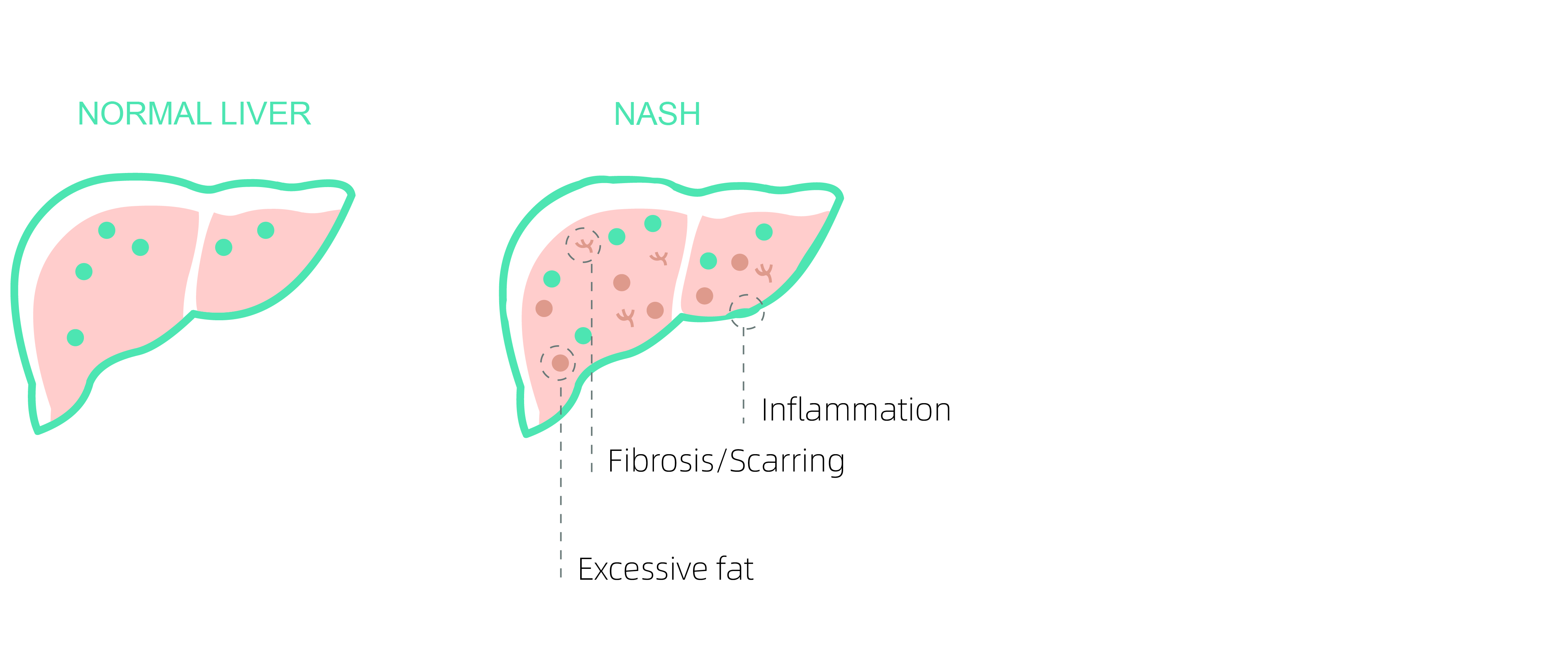
Nonalcoholic steatohepatitis (NASH) is a chronic, progressive liver disease that occurs when excessive amounts of fat build up in the liver, damaging liver cells (hepatocytes). The liver becomes inflamed and can eventually become scarred (fibrosis) sometimes leading to cirrhosis.
NASH is usually a silent disease with few or no symptoms. As the liver damage becomes more severe, patients with NASH can progress to serious, lifethreatening clinical outcomes. This includes decompensated cirrhosis (the permanent damage and scarring of the liver along with functional failure) and liver failure. This, in turn, may cause variceal bleeding (internal bleeding from enlarged blood vessels), mental confusion (known as hepatic encephalopathy), liver cancer hepatocellular carcinoma (HCC), the need for liver transplantation, and even death.
Most people with NASH struggle with other health conditions, including:

When the above cluster of conditions occur together, it is known as metabolic syndrome(MS), and people who have MS are at greater risk of developing NASH.
The only treatment available to patients with NASH is weight reduction through a healthy diet and exercise. While many people can achieve weight loss with lifestyle modification, very few can maintain it and weight gain with additional liver damage typically recur. This is why it is of utmost importance to develop a drug that can help people with this disease, and Gannex is dedicated to this goal.